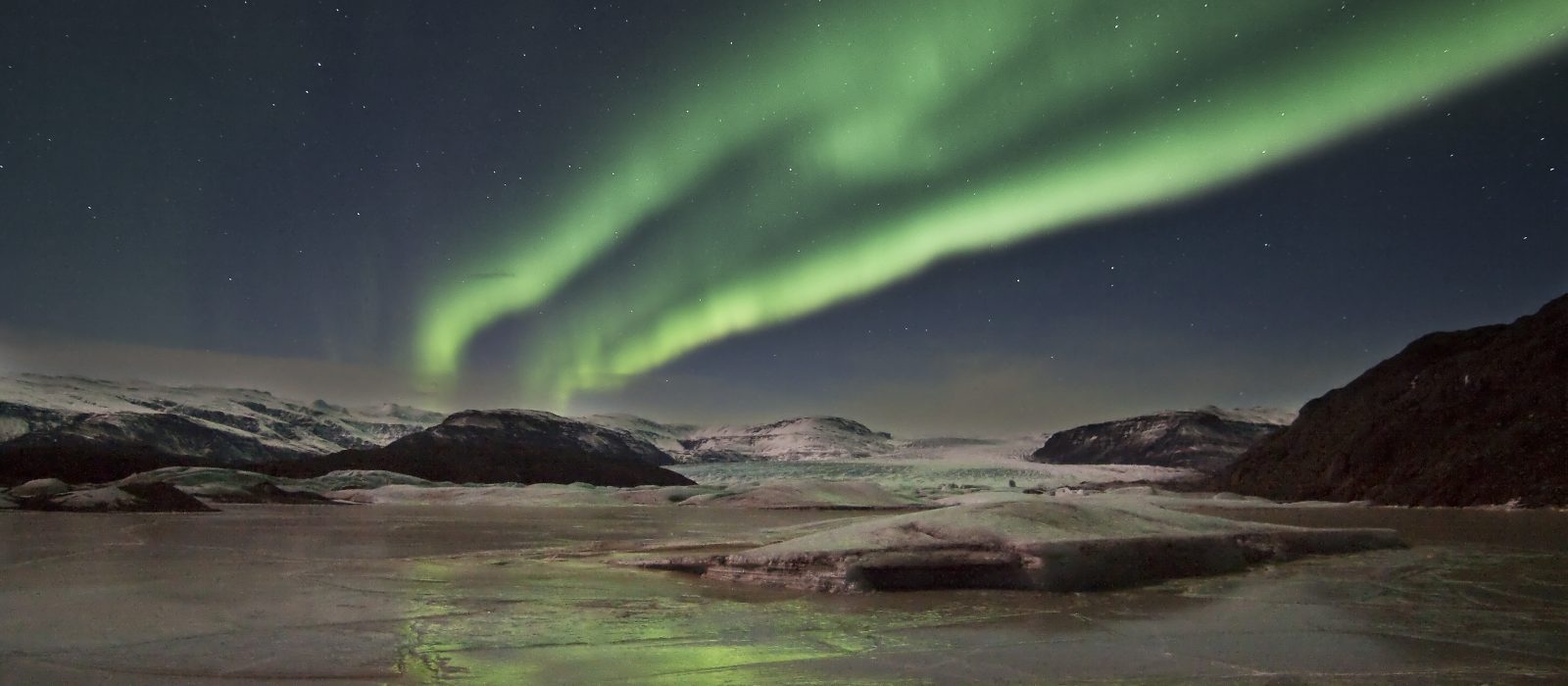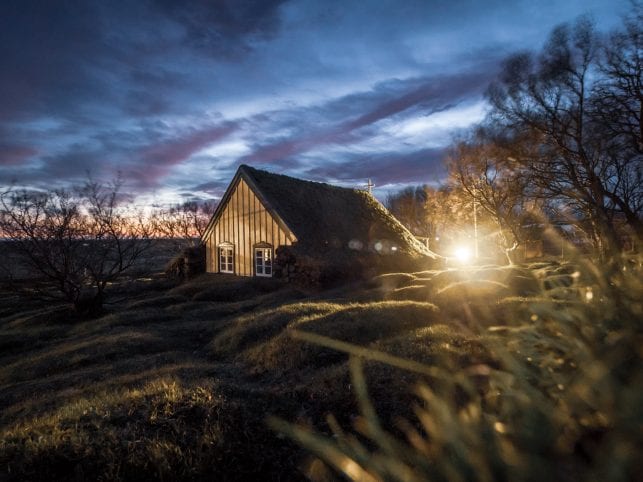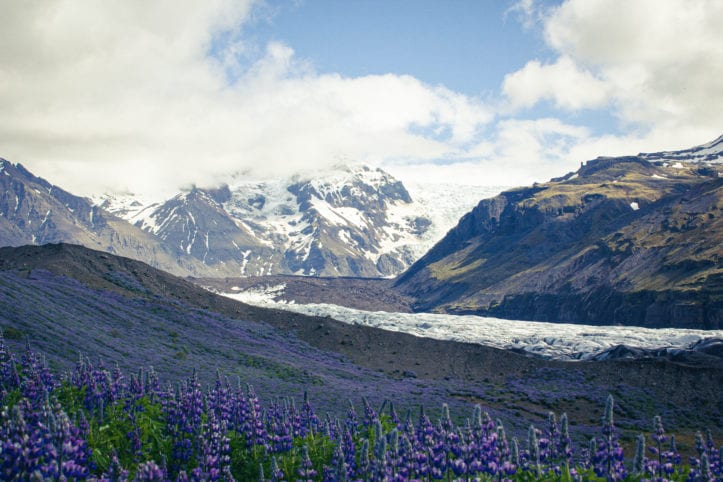The Northern Lights are extremely unpredictable but it is a fact that the longer you stay in Iceland, the more likely you are to see them.
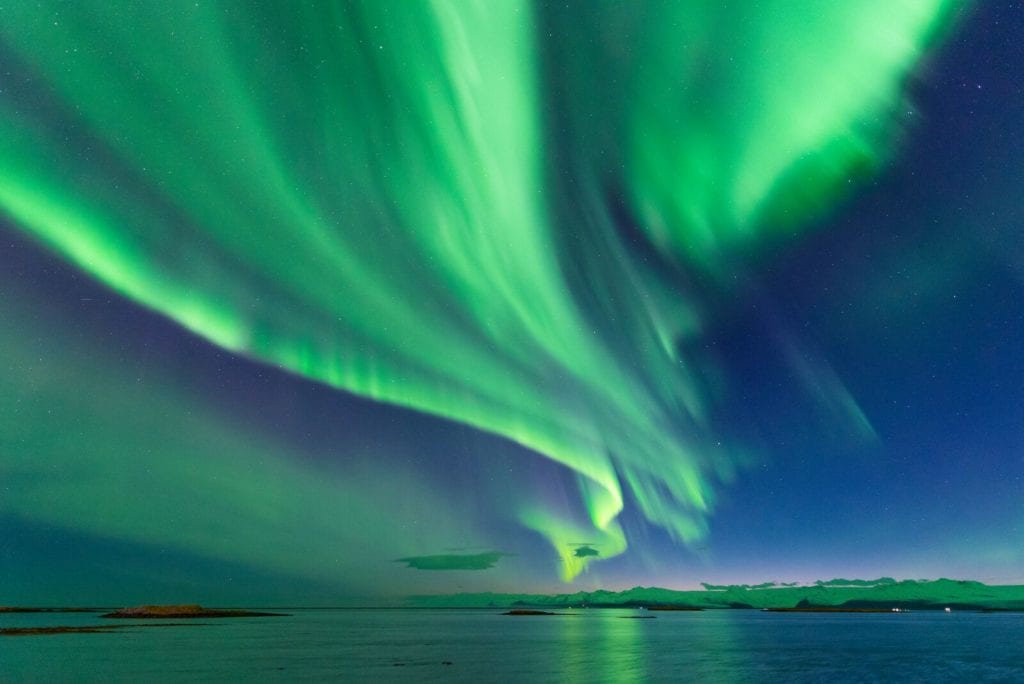
Photo by: Þorvarður Árnason
First, you must look at the Northern lights forecast every night, and it is best to check it out right before going out, as the weather changes quite quickly.
One of the websites that are used for the forecast is from the Icelandic Met Office. You can find the site here. The map of Iceland shows cloud coverage. Look for the white spots, which mean clear skies, while the green means cloudy. Aurora activity is listed at the top right of their website, this is the activity at midnight on the scale 0 to 9. The scale changes in accordance with the date selected under the cloud cover map.
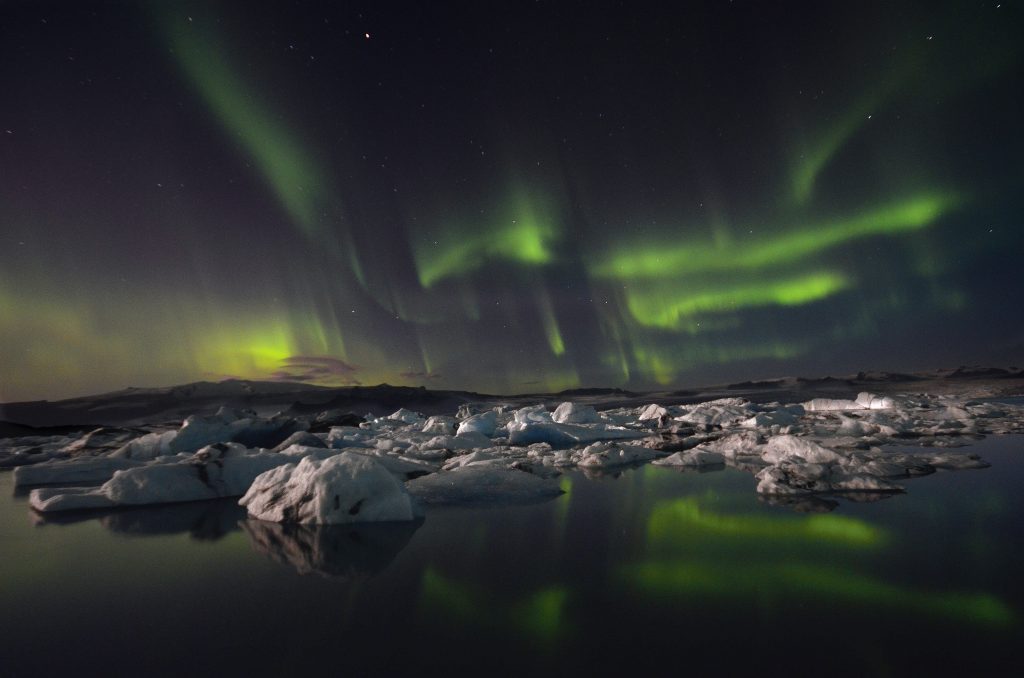
Photo by: Þorvarður Árnason
The next step is to change the scale to the time it fits your need. Keep in mind that the activity shown days ahead can change and it is always best to look at the forecast on the day you wish to go look for them.
The Northern lights in Iceland are visible as early as August, as soon as the night skies get dark enough and weather conditions are favorable. It helps if it is cool and crisp outside, and a small moon helps make them easier to spot.
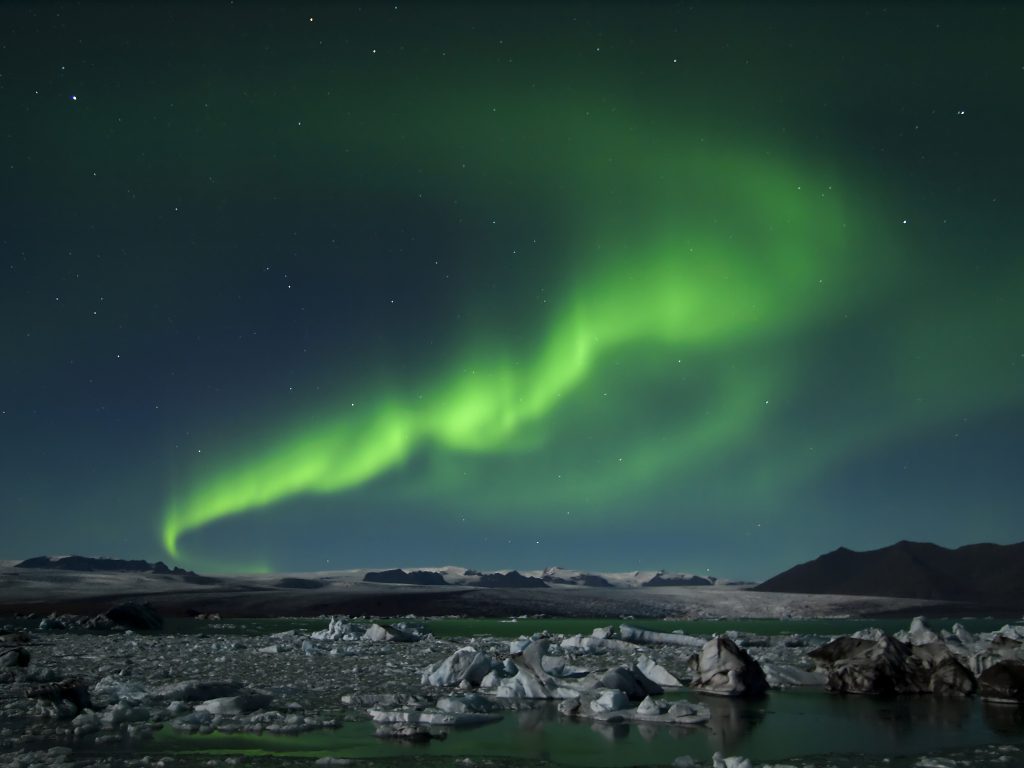
Photo by: Runólfur Hauksson
Optimal Conditions for Northern Lights in Iceland
-From September to April
-Darkness
-Clear Skies
-Still Weather
-Lack of Light Pollution
-Correct Solar Wind Activity
Here are some photos of the Northern Lights that professionals have taken all in our region!
